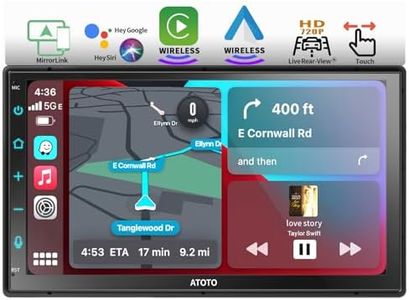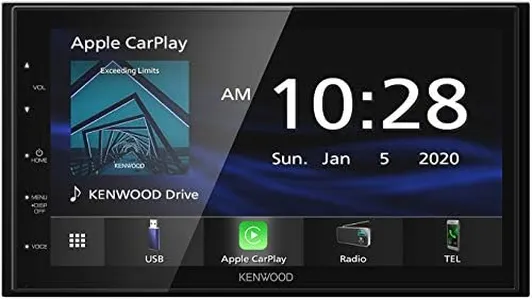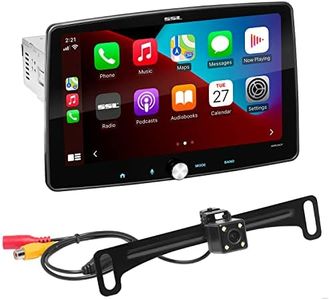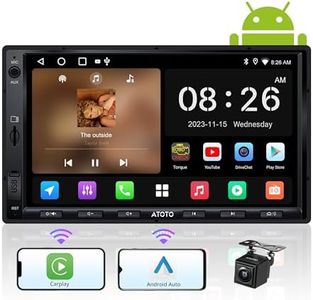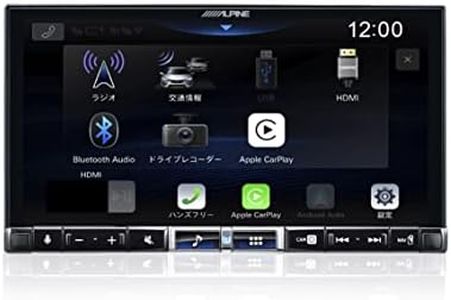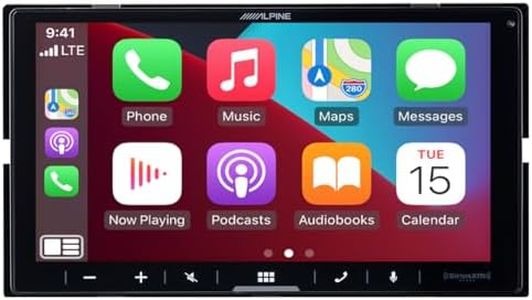We Use CookiesWe use cookies to enhance the security, performance,
functionality and for analytical and promotional activities. By continuing to browse this site you
are agreeing to our privacy policy
10 Best Android Head Units
From leading brands and best sellers available on the web.Buying Guide for the Best Android Head Units
When buying an Android head unit for your car, it’s important to consider both your driving habits and how you plan to use the device. Android head units can upgrade your in-car entertainment, navigation, and connectivity, so focusing on features that best suit your daily routines will help you make a satisfying choice. Before making a decision, think about screen size, performance, compatibility with your vehicle, and ease of use. Understanding key specifications will help you pinpoint the best match for your needs.Screen Size and ResolutionThe screen size refers to the diagonal measurement of the display, typically ranging from 6 to 10 inches or more. Resolution indicates how clear and sharp the display will appear. Bigger screens with higher resolution provide more comfortable viewing experiences, especially for navigation and video playback, but may not fit all car dashboards. If you want easier touch controls, clearer maps, and more room for apps, opt for a larger and higher-resolution screen suited to your dashboard size. Smaller screens can fit compact cars and simple needs.
Processor and RAMThe processor (CPU) and RAM determine how quickly and smoothly your head unit operates. A faster processor and more RAM allow the system to run apps swiftly, switch between functions without lag, and handle resource-intensive tasks like navigation and music streaming. Entry-level units may have basic processors and around 1GB of RAM, suitable only for light use. Mid-range and high-end units often offer 2GB, 4GB, or more RAM and powerful CPUs, appropriate for multitasking or using demanding apps. If you plan to run several apps simultaneously, prioritize higher specs here.
Storage CapacityStorage capacity measures how much data, such as apps, music, and offline maps, the system can hold. Storage typically ranges from 16GB to 64GB or higher. Small storage is enough for basic functions, but if you want to store lots of media or install many apps, look for generous storage space. Consider how much music, videos, and apps you want on your head unit to decide what size is right for you.
Connectivity (Bluetooth, Wi-Fi, USB, GPS)Connectivity features include Bluetooth for wireless calls and streaming, Wi-Fi for internet access, USB ports for charging and file transfer, and GPS for navigation. Make sure the head unit supports the functions you’ll use most—Bluetooth is essential for hands-free calling, and built-in GPS helps if you rely on navigation without needing mobile data. Wi-Fi lets you download updates or stream content on the go where available, while multiple USB ports offer flexibility in connecting devices.
Operating System VersionThe Android version affects the compatibility with new apps, security, and how modern the interface is. Newer versions offer better app support, more features, and often smoother operation. However, an older but stable and widely supported version may be adequate if you only need basic functions. Choose a unit with a recent or well-supported Android version if you’re looking for longevity and compatibility.
Vehicle Compatibility and InstallationNot every head unit fits every car. You need to ensure the unit is compatible with your vehicle’s dashboard, wiring, and mounting style. Some units are 'universal' with adjustable kits, while others are made for specific car models. Think about whether you want an easy plug-and-play setup or are willing to do some extra installation work for a more tailored solution.
Audio Output and Sound FeaturesSound quality depends on audio output specs like power (measured in watts per channel) and supported formats (like MP3, FLAC, etc.). Some units offer advanced audio tuning, equalizers, and support for subwoofers or amplifiers. If you care about sound quality, especially for music, pay attention to audio specs and compatibility with your existing car speakers or planned upgrades.
Smartphone Integration (Android Auto, Apple CarPlay)Smartphone integration lets you mirror your phone’s interface and use key apps safely while driving. Android Auto is essential for seamless integration if you use an Android phone, while Apple CarPlay may be a plus if you have both Android and Apple devices in the family. Pick a head unit that supports your preferred method for the best experience connecting your phone.
Backup Camera and Accessory SupportMany Android head units can connect to extra accessories such as backup cameras, steering wheel controls, or additional screens. If you’d like the safety or convenience of seeing behind you when reversing or controlling the unit from your steering wheel, check that your desired accessories are supported before buying.
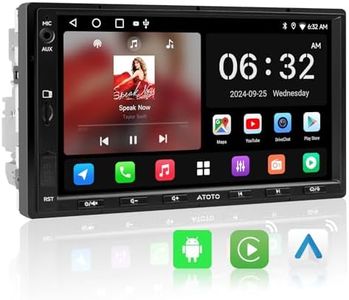
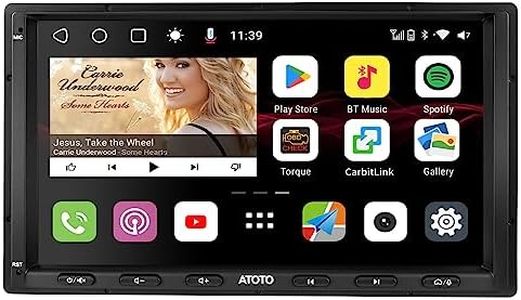
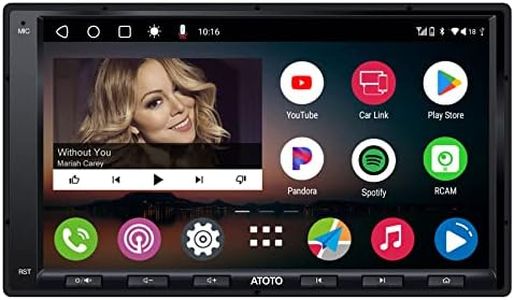

![[9inch] AT](https://images-proxy.bestreviews.guide/T7Z9WAT_TFLjpviMI4Gb7P82ZF4=/0x300/https://m.media-amazon.com/images/I/41gmgPWuuFL._AC_CX679_.jpg)
